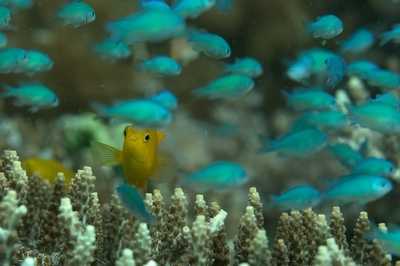National Geographic has created a great web site that explains the aquarium trade. How the corals and fish get from the sea to the local store to your fish tank. It’s an amazingly long journey. When I buy a new fish, I instantly stress over getting it right home, acclimated, and into the tank. I do this with such great care. I sometimes forget that little fish has journeyed several thousand miles before it ended up in my bag. This tells me both that the fish are hardy and stronger than we give them credit for, but also that they are stressed and at the end of their rope. The care I take is needed and worth it.

Often with such resources we find them to be tipped in favor or against the trade. Either a site created by some fish association or by some environmental group dead set on ending the hobby. This new site has done a great job though of telling the story in a balanced way.
“The blue tang is one of the most popular fish in the marine aquarium trade. As the star species in the film Finding Dory, these fish are in high demand. Unlike Nemo, a common clownfish, Dory cannot be easily bred in captivity. This creates a global supply chain that connects fishermen in small islands with hobby aquarists on the other side of the world.
A team of National Geographic Explorers has documented Dory’s little-known passage from reef to aquarium by living with, photographing, filming, and interviewing the people that drive this global trade. “
That’s how the story begins. What follows is told with vibrant photos and high definition video.
One example I’ll cite that shows the balanced nature of the site is this, “There are many good reasons for wanting to keep live reef fish in an aquarium half a world away. Interest and curiosity, education and outreach, scientific research, and even aquarium fish therapy are just some of the many reasons why people pursue this demanding hobby. But as we have seen from bagging to unboxing, there are many places along the global supply chain where things can go wrong, for both fish and people.” As you can see it does a great job explaining the appeal of the hobby. Biased environmentalists always put nature before humanity. Nature is worth preserving but human interest is also worth pursuing.
